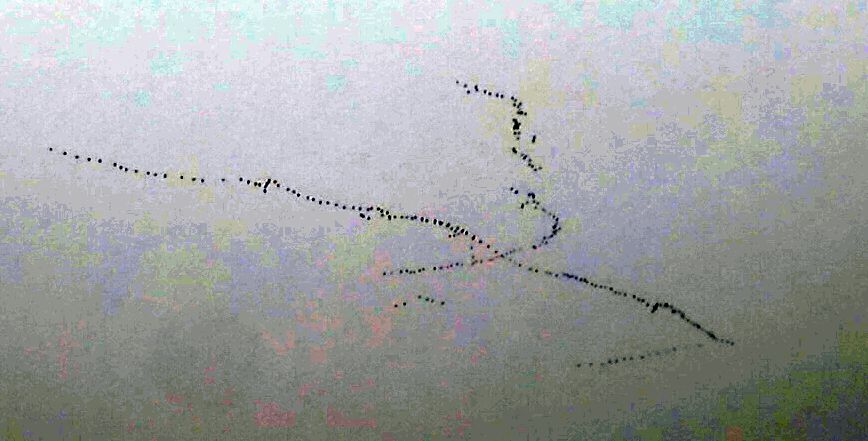Not much sleep last night as the year’s biggest migration of pinkfooted geese this year (kortnebbgås) went on from 2230 to 0400! Counting flocks of geese doesn’t put you to sleep, it has the opposite effect and I’m not complaining…altogether 30 flocks passed over in this time (will have missed a few as I dosed off occasionally) with somewhere between 3000 and 6000 birds passing eastwards along the fjord before heading north to their pit stop on agricultural land just north of here!
The bright light isn’t my moth trap, it’s the one owned by the workers electrifying the railway :)
Tag Archives: pinkfeet
Pinkfeet fly-past
Large fly-past by pinkfeet (kortnebbgjess) yesterday. I noted 9 flocks in total and 6 flocks of in total 900 birds between 14:15 and 15:30. The map showing all reports of geese yesterday shows clearly the migration path first over the Oslo area and then north along the Gudbrandsdal valley to Trondheim along the Trondheimsfjord to the rich pastures near the fjord further north (northernmost dots).
3,590 Pinkfeet
One of the highlights of spring for me are the large flocks of pink-footed geese (pinkfeet) or kortnebbgjess in Norwegian passing Malvik on the final stage of their journey from their overwintering grounds in the low countries to their staging post just north of here before the final journey to Svalbard. We heard yesterday that an estimated 15,000 pinkfeet had been observed flying north over Oslofjorden and on up Gudbrandsdalen the broad river valley north from Oslo to Trondheim. However, last night we were told that due to bad weather they had stopped south of the mountains. I heard a few last night so a few had flown over the mountains….but I was woke at 07:30 as the first flocks started passing and they continued in a steady stream until I had to leave at 12 pm.
I recorded as many flocks as I could by pictures and videos….and estimate that at least 3,590 birds passed in 22 flocks during the morning…so today was very different to what I’d planned! This is the largest number I’ve recorded here and the main migration is nowadays 1 month earlier than it used to be, one of the most obvious and dramatic signs of climate change here….






